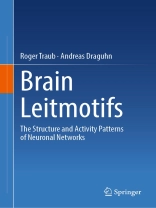This book tackles the question of why the brain is so difficult to fully understand. In neuroscience, data are acquired and analyzed with astonishing techniques and accumulate rapidly. Nevertheless, try to explain how a person can think or why there is such a condition as schizophrenia, and it appears that we really know little. To approach these difficulties, the authors first present a number of case studies in which the operation of a neural circuit is worked out in some detail and, at the same time, the functional significance of the operation is also understood. These examples are complicated in their biologic specifics but are conceptually straightforward. The examples are hoped to provoke an appreciation for what neuroscience can accomplish. The authors then develop some thoughts on how these issues can be addressed–-instead of considering cognition in general, taking instead a subset of cognition that does lend itself to formal description.
Cuprins
Preface.- Introduction: how should one think about nervous systems?.- Basic properties of biological neurons and synapses.- Memory and classification in the brain and artificial systems.- Working memory.- Central Pattern Generators.- Reinforcement learning and a possible application (birdsong).- Complexities of cortex and the need for detailed models.- Gap junctions and very fast oscillations.- Synchronization through excitatory synapses: epilepsy but also conscious perception.- Oscillation synchronization, synaptic plasticity and cell assemblies.- Cortical delta rhythm, spike-wave epilepsy, and cognition.- Cortical up-states.- Sharp-wave/ripples – a special up-state?.- Some application to disease: epilepsy, gap junctions and plateau potentials.- Conclusions.- References.- Glossary.- Index.
Despre autor
Roger D. Traub, M.D. is a Principal Research Scientist at the IBM T.J. Watson Research Center and Adjunct Professor of Neuroscience at the University of Pennsylvania Perelman School of Medicine. He studied pure mathematics at Princeton University and M.I.T., obtained his medical degree at the University of Pennsylvania School of Medicine, and became a board-certified neurologist after training at the Neurological Institute of New York/Columbia Presbyterian Medical Center. He has worked in computational neuroscience since the 1970s with major interests in epilepsy and cortical oscillations. Much of his collaborative work was with the late Miles A. Whittington, to whom this book is dedicated. Dr. Traub additionally began collaborating with Andreas Draguhn in 1997, in research leading (among other things) to novel studies of the mechanisms of very fast neuronal oscillations. As well as other honors, Dr. Traub has served as a Wellcome Trust Principal Research Fellow in the U.K., a visitor at the University of Heidelberg as a Humboldt Prize winner, and has been an Einstein Visiting Fellow at the Berlin Charité/Humboldt University.
Andreas Draguhn, M.D., is Professor and Chair of the Department of Neurophysiology at the Medical Faculty of Heidelberg University. He studied medicine, physics and philosophy at Bonn University. His dissertation work with Bert Sakmann and Peter Seeburg (Max Planck Institutes Göttingen /Heidelberg) dealt with biophysical and pharmacological properties of GABA
A receptor subtypes. He then joined the laboratory of Uwe Heinemann where he worked on physiological and pathological activity in hippocampal networks. Following his habilitation at the Charité (Berlin) he moved to Heidelberg where he continues to work on the phenomenology and mechanisms underlying neuronal network oscillations. A second field of interest is the theory of sciences, especially the conceptual framework and validity of concepts in neuroscientific statements. Besides his scientific work, Andreas Draguhn served in different administrative functions at universities, scientific societies and funding institutions. Since their first encounter in the department of Prof. John G.R. Jefferys at Birmingham University, UK, his work is strongly influenced by the ongoing cooperation with Roger
Traub.












